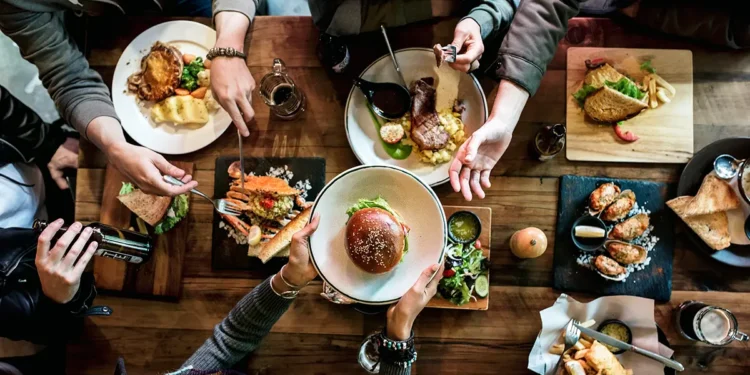While we might shudder at the price of eating out when confronted with restaurant, pub and café menus, how much are these establishments really making? It costs more than ever to dine out. Even so, restaurants probably aren’t making as much dough as you think.
For many of us, what was once a week or twice weekly habit, is now reserved solely for special occasions, because when it comes to eating out, prices have skyrocketed.
A 2023 study by Lumina Intelligence found that the cost of eating outside the home had gone up 15 per cent per head in one year alone, making the average menu item £2.50 more expensive than it was previously. And if you’re eating out recently you may well be familiar with the sight of starters costing around seven or eight pounds, with mains average spend creeping up past the £14 mark.
Of course, in return, our local restaurants – be they chains or private entities – are the envy of the world. We have flavour, choice, ambience and exemplary customer service.
Ultimately, in an industry where margins are thin and price sensitivity is high, such increases during a time of economic instability should come as no surprise. After all, how much are restaurants actually making?
The Maths
As a general rule, one-third of a restaurant’s revenue is allocated to cost of goods sold. Then, another third goes on staff.
That means the remaining revenue must cover overheads like utility bills and rent. Once all expenses are paid, restaurants are typically left with between only 2 and 6% in net profit.

Cause and Effect
The recent increase in food and drink prices – provoked by the war in Ukraine, plus bad weather resulting in poor harvests (this is particularly true of sugar, which saw the worst sugar beet crop in Europe for 20 years and poor harvests in Brazil and India) – produced the sharpest hike since 1977.
The problem is, that even after the source of the problem has stabilised, the consumer price is unlikely to go back to where it was. For farmers, the exorbitant increases in 2022 will have an ongoing effect as fertiliser, energy and other contracts agreed when input costs were high take time to be replaced.
This has a drip-down effect on every other area of the industry including food manufacturers and supermarkets, with restaurants really feeling the brunt as they have so many other overheads to factor in.
Furthermore, if households are struggling to buy the basics such as food, bread and cheese, it stands to reason they won’t have money to spare on pricey evenings out.
Hope
Fortunately for restaurants in particular, there are some possible saviours. After all, many industries have had to adapt to survive following the shift in mentality post-pandemic, and hospitality is no different.
For example, the recent emphasis on hygiene and public health safety means fewer people want to sit in a crammed restaurant, and even less still want to spoon their meal from a buffet that’s susceptible to the sneezes of fellow diners.
However, the rise in delivery services such as Deliveroo, Uber Eats and Just Eat means you can enjoy a restaurant meal in the comfort of your own home.
Another shift is that staff shortages have led to smaller menus being presented to customers in order to downsize kitchen staff, but with consumer awareness increasing around food provenance and a growing appetite for local produce, this can also work in their favour.
Finally, through any crisis, survival of the fittest is ultimately what emerges. Our high street restaurant offering may end up slightly stripped back, but in those that survive (and subsequently flourish because of less competition), you can be assured of the quality of what they do.
So the next time you baulk in horror at a squid starter costing north of a tenner, remember it probably isn’t the result of greed, but survival.









